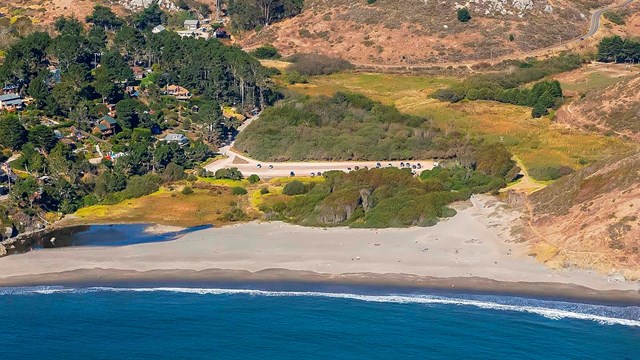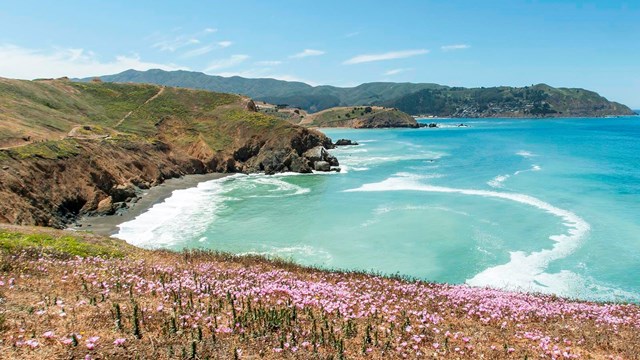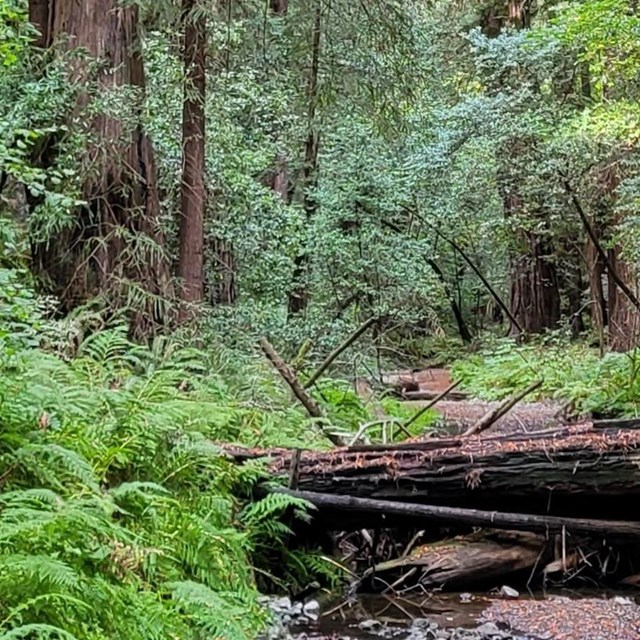We Are CaretakersSince the establishment of the park, we have completed dozens of projects to restore imperiled wildlife species, important habitats, and the natural processes that sustain them. Some—like the restoration of the creek, lagoon, and floodplain at Muir Beach and the transformation of Crissy Field from paved lot to a tidal lagoon—have dramatically improved large swaths of the landscape. Others, such as ongoing efforts to keep invasive weeds at bay, are less obvious but equally important for ecosystem health. Priorities:1. Stop Habitat LossRestoring native habitats helps to bring back ecological balance, preserve native species, and prevent extinction. A healthy ecosystem requires a balance of plants, insects, herbivores, and carnivores which rely on each other for survival. This is as true in the San Francisco Bay Area as it is in the rainforests of South America. Worldwide, species are going extinct due to habitat loss and the introduction of invasive species. Since native habitats are the "ecological houses" of the world, their loss represent a serious threat to global biodiversity. Golden Gate's community habitat restoration programs engage interested individuals, corporations, and youth groups in projects such as invaPresidio Park Stewardssive plant removal, natural areas revegetation, and native horticulture. Learn more about how to get involved in these efforts though the Habitat Restoration Team, Presidio Park Stewards, Park Stewardship, and the Native Plant Nurseries. 2. Preserve Local BiodiversityThe native vegetation and wildlife of the Golden Gate National Recreation Area offer Bay Area residents a chance to make a special connection to this corner of the world where we live, work, and recreate. Coastal California is a diversity hot spot. Our Mediterranean climate and the rich variety of habitats, plants, and animals that it supports rival that of the equatorial rainforests! California's nature is a part of our heritage: the living incarnation of California soils, waters, and genetic evolution. The park houses both our state flower the California poppy, our state bird the California quail, and our state rock serpentenite. When Aldo Leopold embarked in the field of ecology and natural resources management in the tall grass prairies of Wisconsin, he posited that, "the first rule of intelligent tinkering is to keep all of the pieces intact." We are still working to understand the life histories and ecological relationships of the park's numerous threatened and endangered wildlife and plant species. In order to prevent the endangered species within our park from going extinct, Natural Resources Managers of the National Park Service are looking at the larger scale of the ecosystem that the species lives within, and managing this critical habitat for their protection and recovery. 3. Engage Visitors with the Great OutdoorsThe appreciation of our local nature is a celebration of the diversity and uniqueness of the Bay Area. Many suburbanites and rural dwellers have known the grief of losing a natural area to urban development. Every city in the world was formerly a wilderness, and our parklands give us a glimpse into the past, and a reminder of the California Coast that awed early adventurers and pioneers. As with most things in life, we tend to value what we have a relationship with, and the best way to cultivate an appreciation for your local flora and fauna is to get out there and experience it. Get out on a hike, take a ranger led tour, or participate in a natural areas stewardship program! 
Montara Prairie Renewal
The Montara Prairie renewal project will remove trees and shrubs and restore native grasslands. Completed Restoration Projects
Crissy Field
From a waste dump to a thriving coastal habitat, Crissy Field has gone through an amazing transformation 
Muir Beach
A multi-year, landscape-level coastal restoration project designed to restore the ecological functions of the wetlands at Muir Beach. 
Mori Point
Mori Point now boasts freshwater ponds, a concise trail system, and healthy populations of California red-legged frogs. 
Hawk Hill
A new scenic trail and restored Mission Blue Butterfly habitat are outcomes of restoration projects on Hawk Hill. Muir Woods
|
Last updated: May 29, 2025


